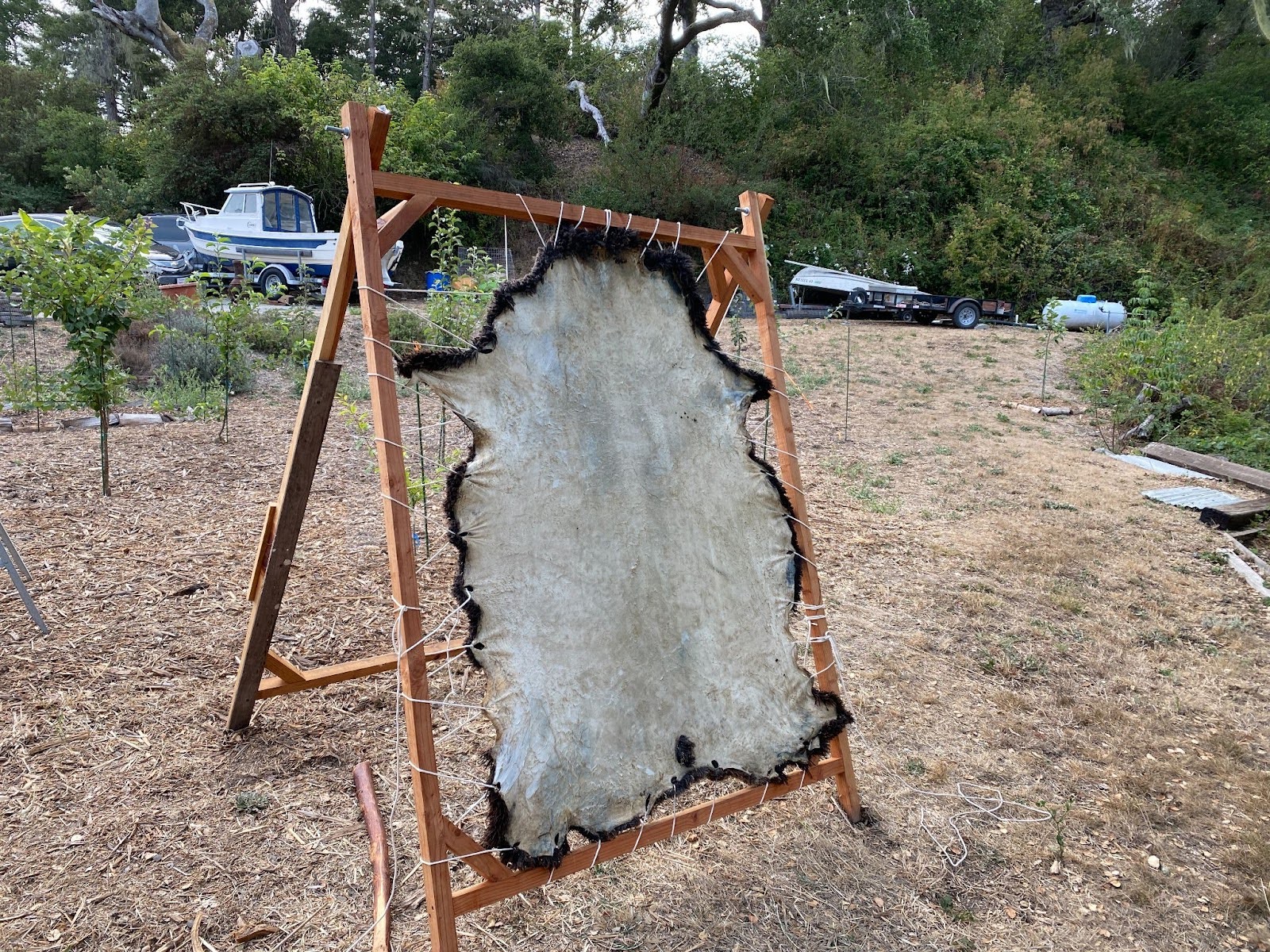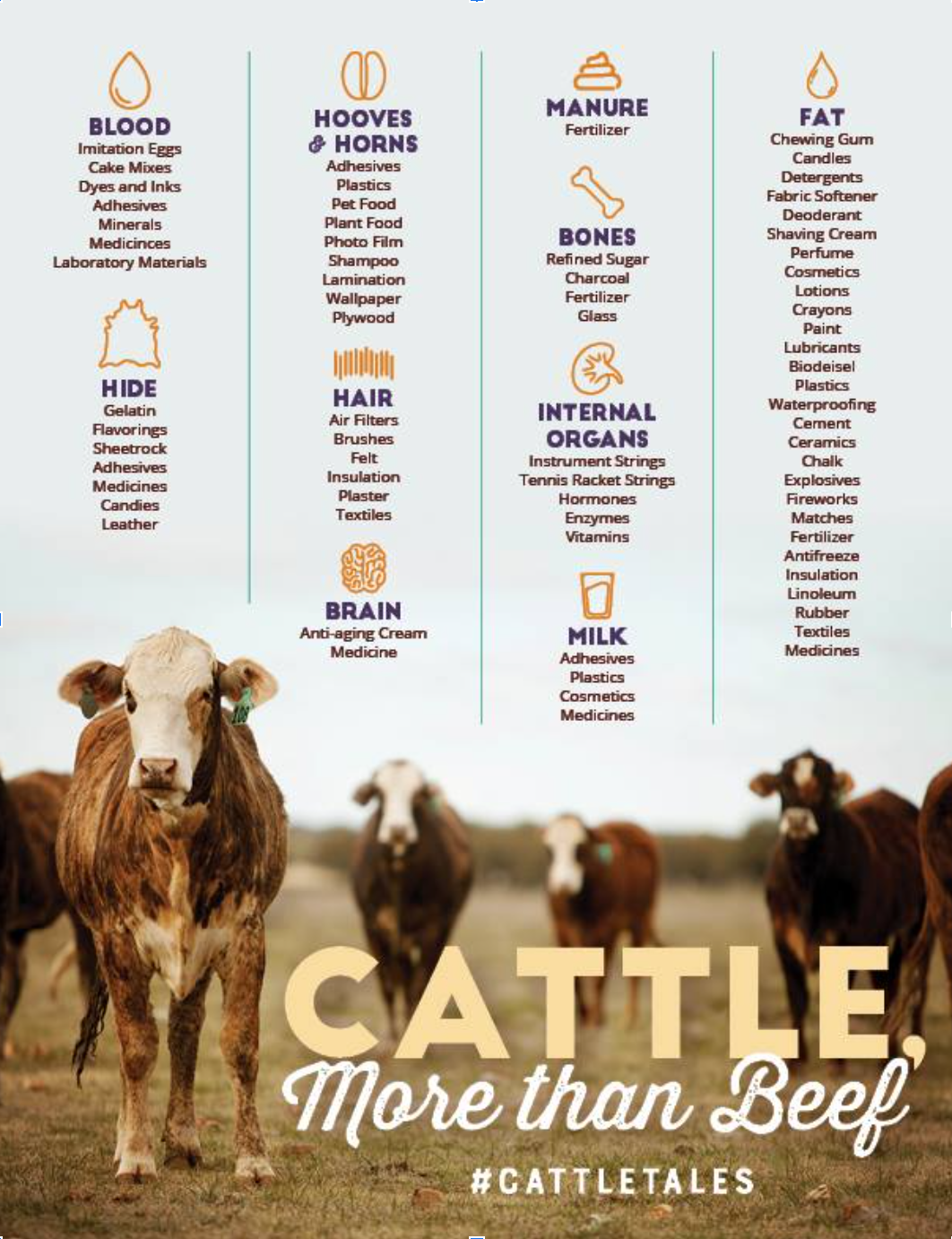Raising animals for food is extremely complex—logistically, ecologically, and emotionally.
A Show of Respect: Utilizing the Whole Animal
“Many cultures have slaughter rituals because they recognize that killing an animal is not the same as, for example, harvesting grain. Every animal we raise for food should have a life worth living, and every time we slaughter an animal it is our responsibility to provide a humane and painless death.”
– Temple Grandin, author of Humane Livestock Handling and Animals in Translation.
12/19/2023
By: Kathy Webster

The traditional tanning method--stretching the hide. Good use of byproducts of carcass utilization.
 Raising animals for food is extremely complex—logistically, ecologically, and emotionally. When I was in college, I was a vegetarian because of my concerns for the welfare of farm animals. However, I discovered a weak link in my diet: B12 and iron. That’s when I started looking into grass-fed, pasture-raised beef as a more sustainable and ethical source of these nutrients.
Raising animals for food is extremely complex—logistically, ecologically, and emotionally. When I was in college, I was a vegetarian because of my concerns for the welfare of farm animals. However, I discovered a weak link in my diet: B12 and iron. That’s when I started looking into grass-fed, pasture-raised beef as a more sustainable and ethical source of these nutrients.
Since working at the TomKat Ranch, I have gained firsthand experience in the entire process of raising livestock, specifically cattle, from their birthing cycles to the packaging of the meat that finds its way onto LeftCoast GrassFed customer tables. This experience has provided me with a deeper understanding of the complexities involved in sustainable and humane farming practices. It has reshaped my dietary choices and fostered a very personal connection between the food on my plate and the ethical considerations behind its production. That’s why when I take a bite of meat, it is with deep respect for the animal.
Here are some of the things I learned and hope others will take to heart.
Only about 40-50% of the animal ends up as meat cuts. Regrettably, what is frequently overlooked in small processing businesses is what happens to the remaining half, which can often go to waste.
As beef eaters, especially regeneratively minded ones, we must value the animals as a whole. Many countries and cultures practice whole-animal utilization. Working with skilled artisan butchers shows respect for the animal by utilizing every part— from organs to tendons, fat, and bones—not just the muscles (i.e., the prime cuts). For millennia, Indigenous cultures have treated nature, including the animals from which they were nourished, with reverence and reciprocity— as kin—harvesting only what they need and leaving the rest for wildlife as their way of paying respect to the animals in their broader ecosystem.
That’s why I feel eating meat is a privilege and not to be taken for granted. I want to know how that animal spent its time: Were they really happy cows grazing on nutritionally diverse pastures? Were they contributing to the soil community by leaving behind their manure, urine, and saliva? Did they fit into the overall biological community as part of the regenerative process? If these questions are answered in the affirmative, then these amazing livestock (cattle in particular) have taken inedible plants from landscapes not suitable for farming and turned them into nutrient-dense food for our health and enjoyment.
What eaters often don’t realize is that the “other” parts of the animals, referred to as byproducts, can be utilized for various goods. Bovine byproducts provide raw materials used in pharmaceutical, cosmetic, household, and industrial products such as rendered fat for soaps, body butter, and candles; hides for throws, leather bags, and jackets; collagen for nutritional needs and medical procedures; and bones and blood turned into fertilizer often missing from degraded soils.
Animal byproducts also contribute to the bottom line of ranchers and processors such as edible offal (liver, kidney, heart, tongue, etc.). Overall, byproducts constitute about 44 percent of the live weight of cattle.
As consumers, we have the power to shift our food system to one that is regenerative—improving and building soil health, increasing biodiversity, and supporting rural communities—and one that is healthier for the animals and people. So, next time you buy beef from a rancher, remember we don’t just raise Rib Eyes; we raise whole cows.
